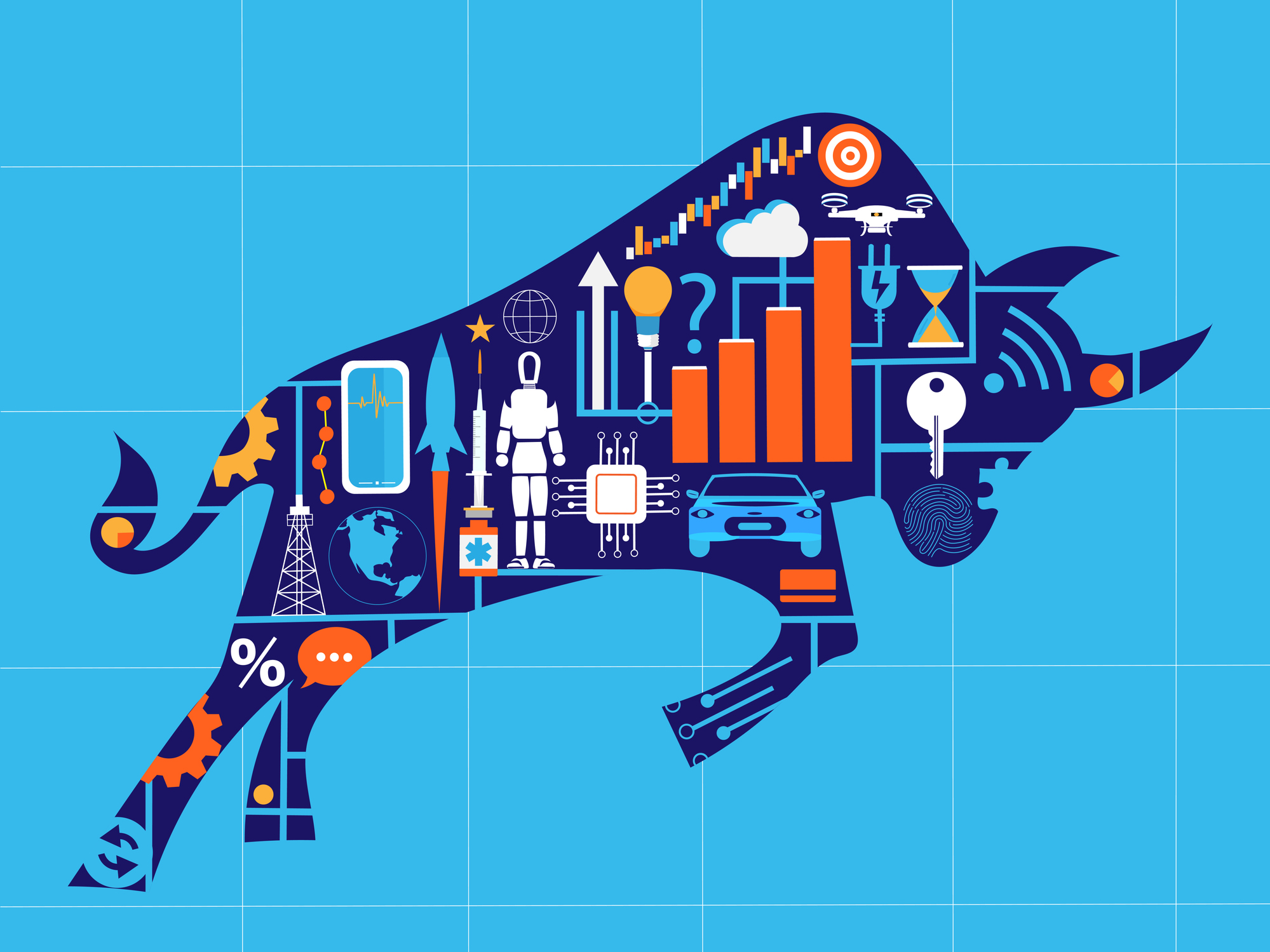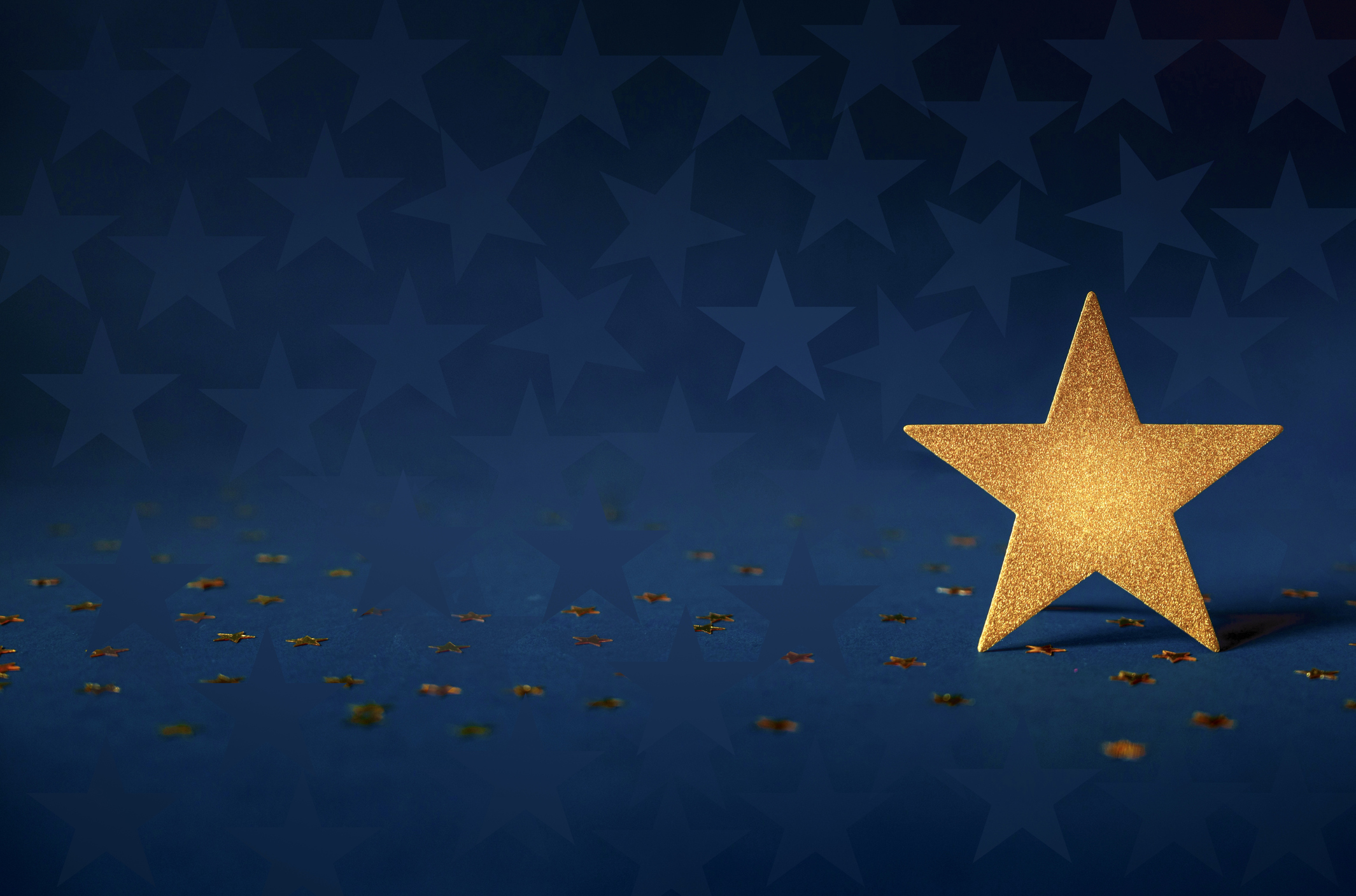How Inflation, Deflation and Other 'Flations' Impact Your Stock Portfolio
There are five different types of "flations" that not only impact the economy, but also your investment returns. Here's how to adjust your portfolio for each one.

Inflation has caused plenty of angst at grocery stores, lumber yards and even concert venues over the past four years. Back in May of 2020, consumer prices were basically flat compared with a year earlier. By June of 2022, the annual inflation rate had soared to 9.1%, then started cooling so that overall prices in December 2023 were 3.4% higher than the year before. That's close to the 40-year average of 2.9% but still not ideal.
Inflation can wreak havoc with your portfolio, too. "Inflation impacts your portfolio in acute and obvious ways and in more sneaky and nefarious ways," says Wylie Tollette, chief investment officer of Franklin Templeton Investment Solutions and coauthor of a 2022 study on which kinds of investments do best in inflationary times.
Inflation erodes the value of your investments by reducing their purchasing power, for starters. And when inflation is on the rise, central bankers tend to respond with higher interest rates to cool the economy and put a lid on prices. The Federal Reserve, for example, has hiked its benchmark rate 11 times since March 2022. The one-two punch of higher inflation and rising rates sent stocks and bonds reeling, making 2022 the rare year in which both markets tanked.
From just $107.88 $24.99 for Kiplinger Personal Finance
Become a smarter, better informed investor. Subscribe from just $107.88 $24.99, plus get up to 4 Special Issues

Sign up for Kiplinger’s Free Newsletters
Profit and prosper with the best of expert advice on investing, taxes, retirement, personal finance and more - straight to your e-mail.
Profit and prosper with the best of expert advice - straight to your e-mail.
More subtly, inflation rates can also influence overall market valuations, or the prices investors are willing to pay for financial assets. In general, the higher the inflation rate, the less investors are willing to pay for stocks.
One rule of thumb states that stocks are overvalued if the average price-to-earnings (P/E) ratio for stocks overall is higher than 20 minus the inflation rate. Based on a 2024 expected inflation rate of about 3%, that implies a fair value for the S&P 500 index would be about 17 times expected earnings. As of January 31, the S&P 500 index traded at a P/E of 21.7, but that's skewed higher by a handful of giant growth stocks known as the Magnificent Seven.
Likewise, investors are generally willing to lock money up in a bond only if they think the bond's interest rate will beat inflation over its lifetime. "It's all about inflation expectations," explains Rob Arnott, founder of the investment firm Research Affiliates.
As bad as inflation can be, stagflation (when inflation is rising but the economy is in a rut) can be worse – as can deflation (when widespread, persistently falling prices threaten to destabilize the economy overall). Economists say there are basically five different pricing environments, or kinds of "flation," each impacting your portfolio in different ways. They're listed below with summaries of which types of investments tend to prosper in each.
Inflation
A little bit of inflation, which is a sustained increase in the price level of goods and services, is generally considered beneficial for the economy. But when prices start rising by more than about 2% a year, policymakers, bankers and businesspeople worry.
Business managers, fearing their revenues will lag, often start raising prices, and workers demand raises, potentially sparking a dangerous upward cycle. The investments that have historically beaten high inflation include energy stocks, residential real estate held directly (real estate investment trusts have provided much less inflation protection in previous cycles) and Treasury inflation-protected securities. TIPS are federal IOUs that adjust their principal in line with the Consumer Price Index (CPI).
Commodity funds also tend to beat inflation. For example, the TCW Enhanced Commodity Strategy (TGABX), a member of the Kiplinger 25 list of our favorite no-load mutual funds, returned 44% in the most recent period of rising inflation, from March 2021 through May 2022.
Stocks in general can be a poor inflation hedge over short periods but serve as potent protection for investors willing to buy and hold for more than five years, Tollette says. Fixed-rate bonds typically underperform during high-inflation periods.
Disinflation
When the rate at which prices are rising slows, you get disinflation, which is what we have now. During disinflation, unlike in deflationary periods, prices still go up – sometimes painfully. The important distinction is that they are climbing more slowly than in the recent past.
The good news is that a moderation of inflation, such as the cooling that the economy experienced in 2023, is typically a boon for investors because it bodes well for corporate profitability and thus stock prices. During these periods, investors are often rewarded for taking more risks, such as buying stock in growth-oriented companies.
Since inflation started declining in July 2022, the growth-oriented Nasdaq Composite index has handily beaten broader measures, such as the S&P 500, for example. Declining inflation also means that bonds bought during the more inflationary period now promise higher "real," or inflation-adjusted, returns. Commodities, however, have done poorly in previous periods of disinflation.
No-flation
Periods of price stability (typically defined as times when consumer prices overall rise by no more than 2% a year) are sometimes referred to as "no-flation." They tend to be a "golden era for financial assets," says Gary Schlossberg, global strategist for the Wells Fargo Investment Institute.
Think back to 2013 through 2019, when the Consumer Price Index generally stayed below 2%. The S&P 500 notched gains in six of those seven years and produced an above-average annual return of 13.6%. Price and economic stability create a good climate for just about all investments but especially for riskier investments, such as growth-oriented and small-company stocks, Schlossberg says.
Deflation
The prices of some items, such as computers, gasoline and seasonal foods, drop from time to time. But a generalized, economy-wide drop in prices, or deflation, is rare. That's good, because deflation can lead to a vicious cycle: A weakening economy leads to lower wages, layoffs and decreased spending, which in turn ushers in still-lower prices and a further weakening of the economy.
The U.S. has seen general deflation only twice in the past century: During the Great Depression in the early 1930s and from March through October of 2009, partly overlapping what many call the Great Recession. In both periods, stock prices initially plunged much more than consumer prices and took years to recover. Volatile commodities also tend to suffer during deflation. Bonds that pay a fixed, positive rate of interest offer positive real returns, barring a default.
Stagflation
Inflation that coincides with stagnation in the job market and the economy, known as stagflation, causes truly challenging times for investors. Because economic weakness often prevents companies from raising prices enough to recover their costs, profits shrink, and stock returns fail to keep up with inflation.
From 1973 through 1982, the annual inflation rate averaged 8.7% and the average unemployment rate topped 7%. But the annual average return of the S&P 500 over that period was just 6.7%, meaning investors lost purchasing power. The economy escaped a stagflation scare during the pandemic.
If you want to hedge against this type of painful economic malaise, Tollette says your best bet is TIPS, which, if you hold to maturity, are guaranteed to return your investment and move up with inflation.
Note: This item first appeared in Kiplinger's Personal Finance Magazine, a monthly, trustworthy source of advice and guidance. Subscribe to help you make more money and keep more of the money you make here.
Related content
Profit and prosper with the best of Kiplinger's advice on investing, taxes, retirement, personal finance and much more. Delivered daily. Enter your email in the box and click Sign Me Up.

Kim Clark is a veteran financial journalist who has worked at Fortune, U.S News & World Report and Money magazines. She was part of a team that won a Gerald Loeb award for coverage of elder finances, and she won the Education Writers Association's top magazine investigative prize for exposing insurance agents who used false claims about college financial aid to sell policies. As a Kiplinger Fellow at Ohio State University, she studied delivery of digital news and information. Most recently, she worked as a deputy director of the Education Writers Association, leading the training of higher education journalists around the country. She is also a prize-winning gardener, and in her spare time, picks up litter.
-
 The 'Scrooge' Strategy: How to Turn Your Old Junk Into a Tax Deduction
The 'Scrooge' Strategy: How to Turn Your Old Junk Into a Tax DeductionTax Deductions We break down the IRS rules for non-cash charitable contributions. Plus, here's a handy checklist before you donate to charity this year.
-
 IRS Says You Made a Tax Return Mistake? A New Law Could Help You Fight Back
IRS Says You Made a Tax Return Mistake? A New Law Could Help You Fight BackTax Law Updated taxpayer protections change what the IRS must explain on error notices and how long you have to respond.
-
 What to expect from the global economy in 2026
What to expect from the global economy in 2026The Kiplinger Letter Economic growth across the globe will be highly uneven, with some major economies accelerating while others hit the brakes.
-
 What Investors May Face in the New Year: Interview
What Investors May Face in the New Year: InterviewKeith Lerner, the chief market strategist and chief investment officer for Truist Wealth, speaks with Kiplinger.
-
 21 Money Moves Smart People Are Making Before 2026
21 Money Moves Smart People Are Making Before 2026These steps can help trim your tax bill, boost your savings, lower your health care costs and set you up for financial success in 2026.
-
 Giving Tuesday 2025: 'Every Small Act Makes a Major Difference'
Giving Tuesday 2025: 'Every Small Act Makes a Major Difference'GivingTuesday encourages generosity in any form, from donating to charity to helping your neighbors.
-
 What to Make of a Hot IPO Market
What to Make of a Hot IPO MarketThis year's crop of initial public offerings could be even dicier than usual because of a skew toward tech and crypto.
-
 How to Position Your Portfolio for Lower Interest Rates
How to Position Your Portfolio for Lower Interest RatesThe Federal Reserve is far from done with its rate-cutting regime. This is how investors can prepare.
-
 Moves to Manage the Soaring Costs of Owning a Car
Moves to Manage the Soaring Costs of Owning a CarIt's costing more and more to keep a car on the road, but you can drive some costs down. Here's how to get a better deal on insurance premiums, repairs and gas
-
 A JPMorgan Fund Holds Its Own Thanks to a Focus on Quality
A JPMorgan Fund Holds Its Own Thanks to a Focus on QualityDespite its defensive characteristics, the JPMorgan U.S. Quality Factor holds up in good times and in bad.
-
 What Fed Rate Cuts Mean For Fixed-Income Investors
What Fed Rate Cuts Mean For Fixed-Income InvestorsThe Fed's rate-cutting campaign has the fixed-income market set for an encore of Q4 2024.
